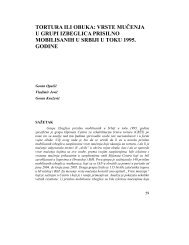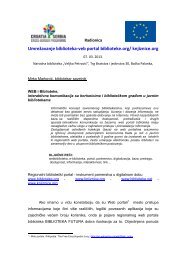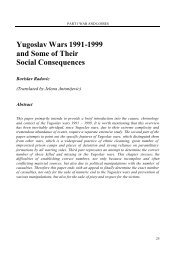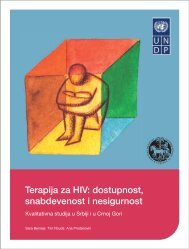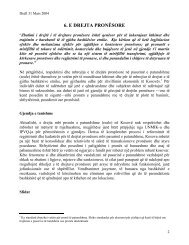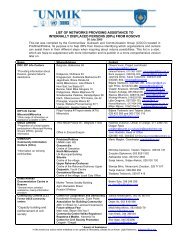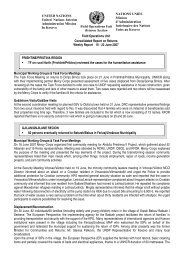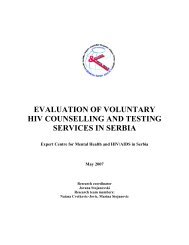Psychological Preparation of Torture Victims as Witnesses toward ...
Psychological Preparation of Torture Victims as Witnesses toward ...
Psychological Preparation of Torture Victims as Witnesses toward ...
Create successful ePaper yourself
Turn your PDF publications into a flip-book with our unique Google optimized e-Paper software.
TORTURE IN WAR: CONSEQUENCES AND REHABILITATION OF VICTIMS<br />
INTRODUCTION<br />
One <strong>of</strong> b<strong>as</strong>ic aims <strong>of</strong> torture is to bring a person down to a position <strong>of</strong> extreme helplessness<br />
leading to a deterioration <strong>of</strong> cognitive, emotional and behavioural functions. The camp<br />
detention and exposure to psychophysical torture also results in damages <strong>of</strong> b<strong>as</strong>ic<br />
psychological and social functioning, the aim <strong>of</strong> torture being not only to physically break<br />
the victim but also to lead to the disintegration <strong>of</strong> his/her personality, its purpose being to<br />
destroy relations with family and society in their entirety, wreck fant<strong>as</strong>ies and hopes in<br />
better future. Victimisation represents the result <strong>of</strong> jeopardising fundamental<br />
preconceptions <strong>of</strong> an individual and his/her life. Those are preconceptions <strong>of</strong> personal<br />
inviolability, an <strong>as</strong>sumption that the world h<strong>as</strong> its meaning and order and a positive self<br />
perception (Jan<strong>of</strong>f-Bulman & Frieze, 1983).<br />
Besides bodily harm and permanent disability <strong>as</strong> a consequence <strong>of</strong> psychophysical<br />
ill-treatment, posttraumatic stress disorder (PTSD) represents one <strong>of</strong> the most frequently<br />
established psychiatric diagnoses in torture victims, but <strong>of</strong>ten there are concomitant<br />
psychiatric dise<strong>as</strong>es such <strong>as</strong> alcohol dependence, depressive disorder, anxious, dissociative,<br />
somat<strong>of</strong>orm and even psychotic disturbances (Arthur, 1982). <strong>Torture</strong> exposure may lead to<br />
permanent personality disorders after cat<strong>as</strong>trophic experience, which is manifested through<br />
withdrawal from social communications and an experience <strong>of</strong> the world <strong>as</strong> a menace<br />
accompanied by constant distrust.<br />
War crimes are imprescriptible and it is supposed that their perpetrators will be<br />
brought to justice when torture victims become key witnesses in court. Thus, one person<br />
may unite the victim, witness and patient regardless <strong>of</strong> the fact whether the person h<strong>as</strong><br />
received treatment or not so far.<br />
In the eyes <strong>of</strong> the victim justice h<strong>as</strong> different meaning and expectations vary: e.g. a<br />
person with an experience that he/she enjoys greater rights may expect higher reparation, or<br />
an individual with previous deprivations might paradoxically believe that he/she should<br />
receive more due to other »damages« in his/her life, while others may demand social<br />
injustice compensation (Raphael, 1992).<br />
IMPORTANCE OF TESTIMONY FOR THE VICTIM-WITNESS<br />
No social process may annul the extreme torture effect. An impartial court trial <strong>of</strong><br />
perpetrators may to a certain extent alleviate effects <strong>of</strong> a traumatic event, while, on the<br />
other hand, the torture victims’ testimony is at the same time desirable and also problematic<br />
for the victim. It is desirable, since thus justice is satisfied and moral postulates undermined<br />
by torture are re-established and faith in people regained. Their testimony h<strong>as</strong> a wider<br />
historical function - »the crime committed is not to be forgotten « by the disclosure <strong>of</strong> the<br />
truth, which is a step requisite for the transformation <strong>of</strong> interethnic conflicts (Ilic, 2002).<br />
378




